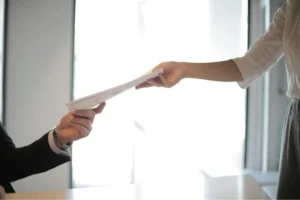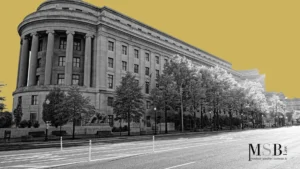
The Heart of a Successful Succession Plan: How to Choose the Right Person to Carry Your Legacy Forward
Choosing your successor is often the most emotional and challenging aspect of successful succession planning. It’s not just about finding someone who has enough money or can run your business effectively—it’s also about identifying a person who understands the heart of what you’ve built, who can honor your values, and who has the capability to take your legacy to new heights. This decision is a big key to the future of everything you’ve worked so hard to create, making it critical to approach this step with thoughtfulness and intention. Our previous blog post covered five questions you should consider as you are making plans for your business’s succession. Now, let’s take a close look at question 1: “Who? – Choosing Your Successor.” 1. Passion and Alignment with Values A successful succession plan begins with a successor who not only has the necessary business skills, but is also someone who has a genuine passion for the work. Passion fuels dedication and commitment, two traits that are non-negotiable when it comes to preserving and growing your legacy. Beyond that, does this person align with your values? A successor who shares your philosophy on leadership, ethics, company culture, and positive community impact will be more likely to sustain the vision you have set for your business. Take time to reflect on the core principles that matter most to you, and ensure your successor resonates with those ideals. 2. Capability and Skillset While passion and alignment with values are essential, so too is the capacity to lead effectively. Ask yourself if your successor has the technical skills, business acumen, and strategic mindset to guide the company forward. Capability doesn’t just mean experience—it also involves adaptability, teachability, and the potential for growth. If your preferred candidate isn’t quite ready yet, but shows promise, consider mentorship opportunities that can bridge the gap. Think about the timeline for your transition and whether there’s room to develop their skillset in preparation for taking the reins. 3. Willingness to Take on the Responsibility One of the often-overlooked parts of successful succession planning is making sure the person you’re considering genuinely wants the role. Stepping into leadership can be overwhelming, especially if they understand the full weight of responsibility. It’s crucial to have open, honest conversations with your potential successor(s) to ensure they are excited and ready to take on the responsibility. This is not just about capability but also about willingness—if they feel pressured into the role, it could lead to significant challenges down the road. 4. Relationship with Stakeholders A successful transition is not just about the successor’s relationship with you; it’s also about their relationship with all your stakeholders including your employees, clients or customers, and the broader community. How well does your successor get along with key stakeholders? Are they respected in the community? Are they trusted by the people who matter most in the day-to-day running of your business? These relationships are the foundation upon which a successful future is built, so it’s important to choose someone who can foster strong and supportive connections. 5. Emotional Intelligence and Leadership Style The way your successor leads matters. A great leader makes sound business decisions, while also inspiring others and navigating the human complexities of running an organization. Emotional intelligence (EQ)—the ability to empathize, communicate effectively, and respond with sensitivity—is a trait that can set a successor apart. Observe how they handle challenges, interact with others, and respond to conflict. The right successor should be able to carry your vision forward while also carving their own path, bringing both empathy and resilience to their role. 6. External vs. Internal Succession Sometimes the best candidate is within your company—a family member, a long-standing employee, or even a co-founder. Other times, it might make more sense to look externally. Both approaches have their pros and cons. An internal candidate already knows the ins and outs of the company culture and operations, while an external candidate can bring fresh ideas and a new perspective. It’s essential to weigh these factors and decide which type of candidate will best serve your business’s long-term goals. Consider who will be most effective in guiding the company toward your vision, while maintaining the core of what you hold most dear. 7. Communicating Your Choice Once you’ve chosen your successor, the next step is to communicate that decision effectively to all relevant parties. The way you announce this choice can have a significant impact on how it is received by employees, clients, and partners. Make sure your communication is transparent, respectful, and celebrates both your legacy and the future leadership. Introducing the successor gradually can also help ease anxieties and build trust, allowing everyone to adjust to the upcoming change. Choosing a successor is a deeply personal journey. You’re deciding who will carry forward your life’s work, and that requires both your head and your heart. By prioritizing factors like passion, capability, alignment with values, and the ability to build relationships, you can make a choice that ensures your business’s future is in good hands, and allows both your business and the community to experience the benefits. Remember, it’s not about finding someone who will simply replicate what you’ve done—it’s about finding someone who will honor your legacy and take it to the next level. At MSB Law, we understand how important it is to make the right choice for your business’s future. Our values-driven approach to successful succession planning ensures you have the support and guidance you need every step of the way. Let us help you create a plan that respects your vision and sets your successor up for success. Contact MSB Law today to begin securing your legacy.





